A sage discovered that the initials of the four Hebrew words in Numbers 28:26, which describe the sacrificial meal offering on Shavuot, spell mei halav (from milk), suggesting that dairy food is the acceptable dinner for the festival. At Sinai, the Israelites were considered to be as innocent as newborns, whose food is milk. {Source}Cool, right? There's more on that link that talks about halav (milk) having the same gematria value as the number of days that Moses spent on Mount Sinai... a stretch? Perhaps, but I do love puzzles!
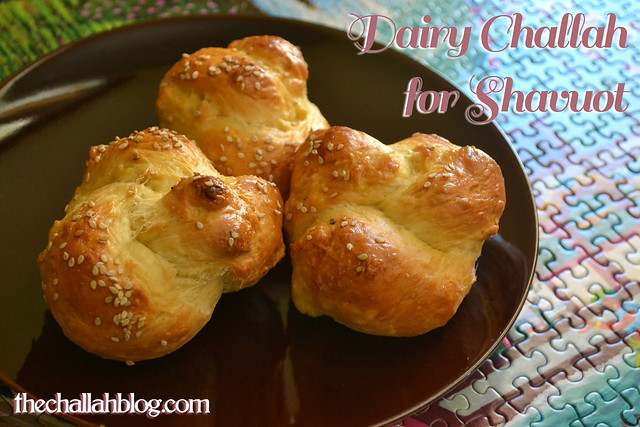
I've made challah with milk before... Sprouted Wheat with Milk and Honey Challah included milk because I read (somewhere) that milk helps relax the wheat. I wasn't honestly convinced that it made much of a difference, but it was a fun experiment anyway!
This recipe will yield one large or two medium-size loaves.
2 1/4 instant yeast (1 packet)
3 c bread flour
1 tsp salt
1 c milk, slightly warmed (I used skim)
1 heaping tbsp basswood or other dark honey
2 eggs plus 1 more for egg wash
This challah was the first one that I actually used instant yeast like one is supposed to use instant yeast... I just mixed it in with the flour. Normally, I've been afraid of that and proof it just like active dry yeast, although you don't have to do that.
Mix together the yeast, flour, and salt. Can you spot the yeast here?
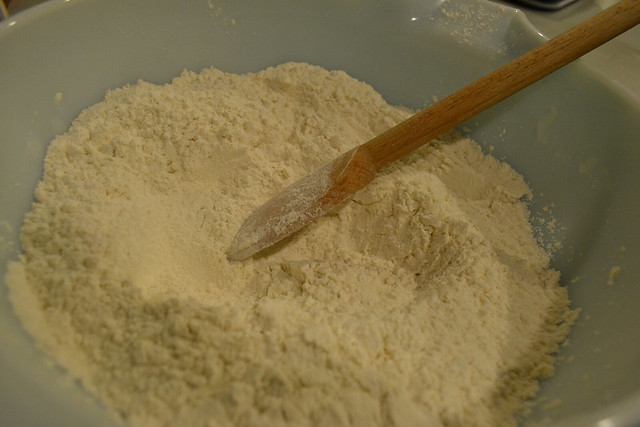
On the stove in a small pan, warm the milk and honey, stirring constantly. Add the milk/honey mixture and the eggs to the flour/yeast mixture.
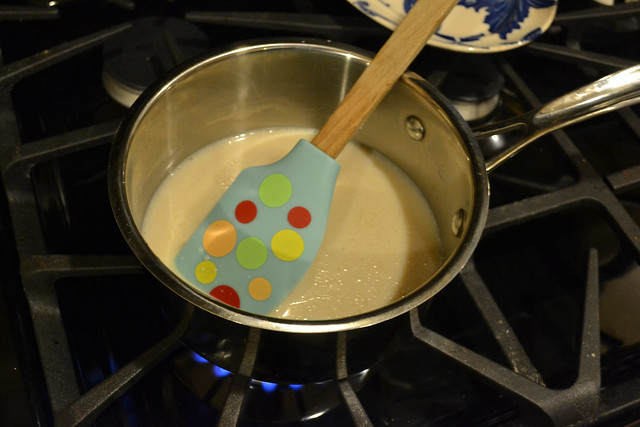
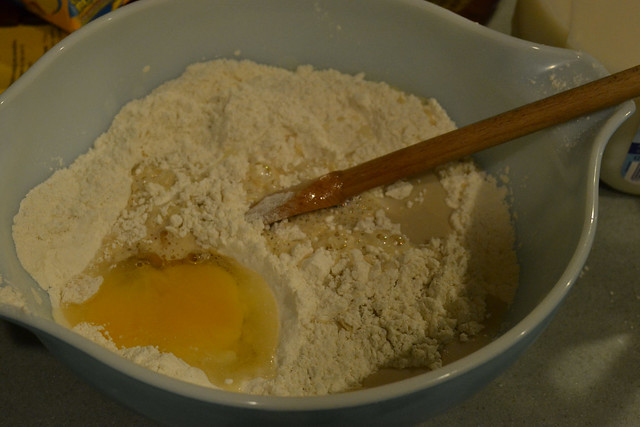


Now, here's the part where I get honest. I have no beautiful pictures of this challah to share. I got a little... cavalier... with my challah shape. I read a lovely little story in Maggie Glezer's A Blessing of Bread on Ladder Challah. Glezer writes:
The ladder-shaped challah, which is served on Shavuot, the holiday that celebrates the giving of the Torah to the Jewish people on Mount Sinai, symbolizes spiritual ascension and Mount Sinai because the Hebrew words for "ladder" and "Sinai" have identical numerical value (as shown in the mystical study of Torah called gematria). {A Blessing of Bread, 79.}So, I set to work. I started with a flattened disk and added the rungs.

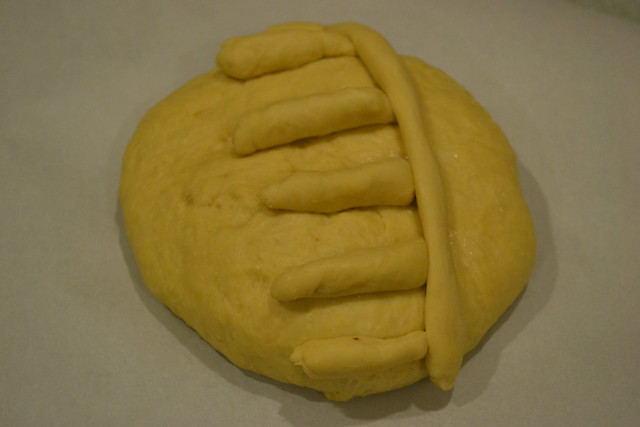
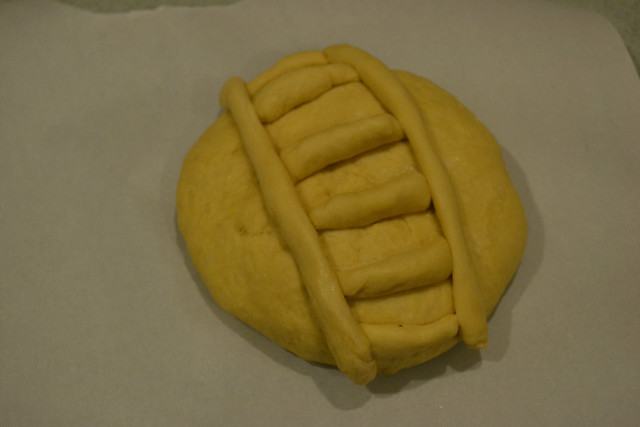
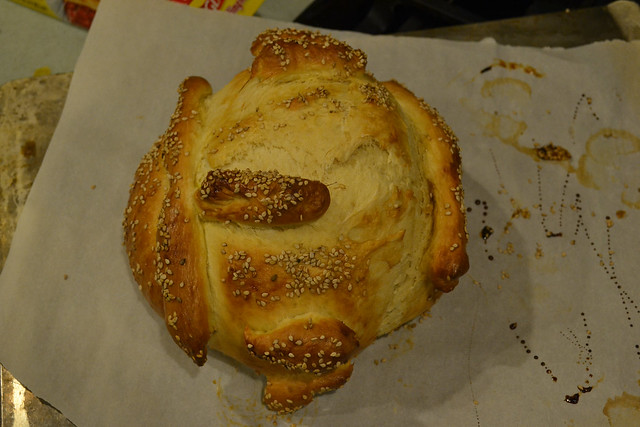
Luckily, I also made some rolls that DID turn out quite lovely. This challah has a sweetness to it that's a bit unexpected. It also has a darker color, which I suspect is from the basswood honey. It's a bit tough to work with... I think it's the lack of oil. But, overall, I wouldn't change a thing. It was a really nice dairy challah!
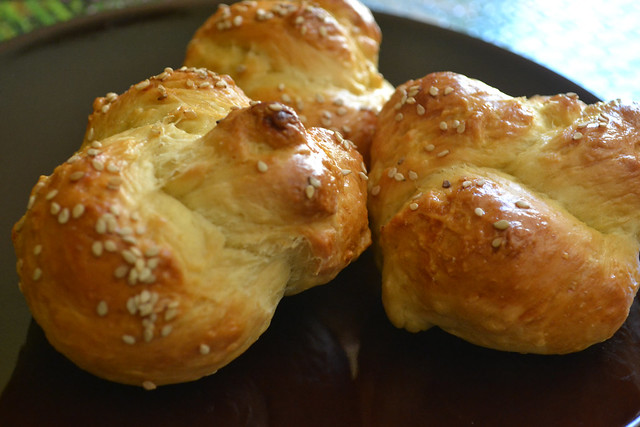

Hi there! Your challas look delicious I almost smelled them thru my screen. But I have to mention that according to Halacha it's not so simple to bake milchig challah. and I quote
ReplyDeleteOne is not supposed to bake bread with dairy, for they might eat it by mistake with meat. And if it was indeed baked with dairy one cannot eat the bread even by itself, unless it's small enough to be eaten at once, or a change in the bread itself was made. And that's why we can eat dairy breads on Shvuous since it's either small or it's recognizable.
אין לשין עיסה בחלב שמא יבוא לאכלה עם בשר ואם לש כל הפת אסור, אפי' לאכלה לבדה. ואם
הי' דבר מועט כדי אכילה בבת אחת או
ששינה צורת הפת שתהא ניכרת שלא יאכל בה בשר מותר
ה נ ה ולכן נוהגין ללוש פת עם חלב בחג השבועות גם בשומן לכבול שבת כי כל זה מחשב כדבר מועט גם כי צורתן
משונה משאר פת
ReplyDeletecollege girls for sex in kolkata
call girl for sex in kolkata
kolkata call girl address
sexy girls phone number
call girl picture
sex girl in kolkata
college call girls in kolkata
kolkata call girl services
sex girl kolkata
kolkata sex call girls
call girl contact in kolkata
direct call girl number